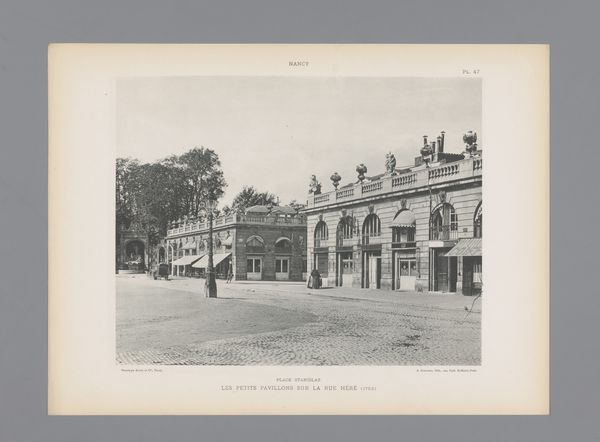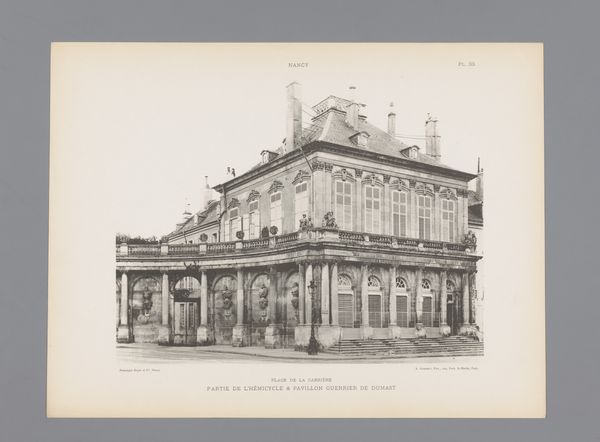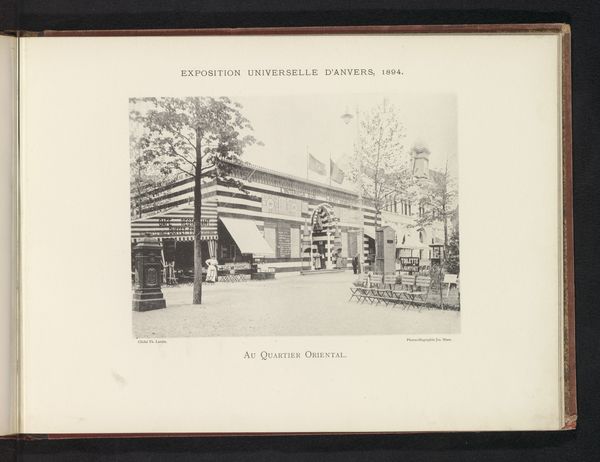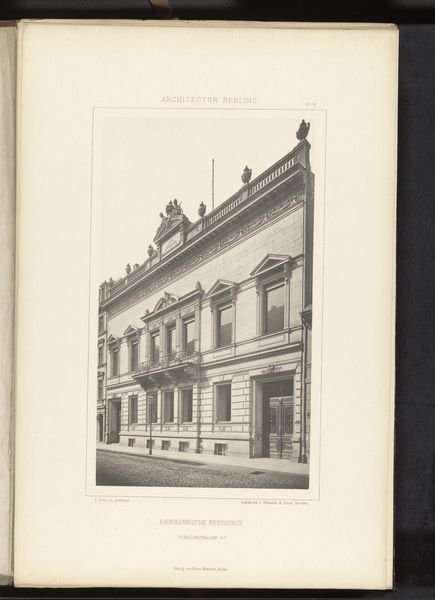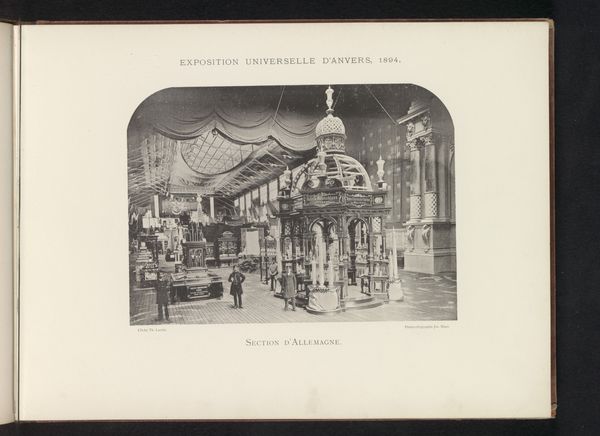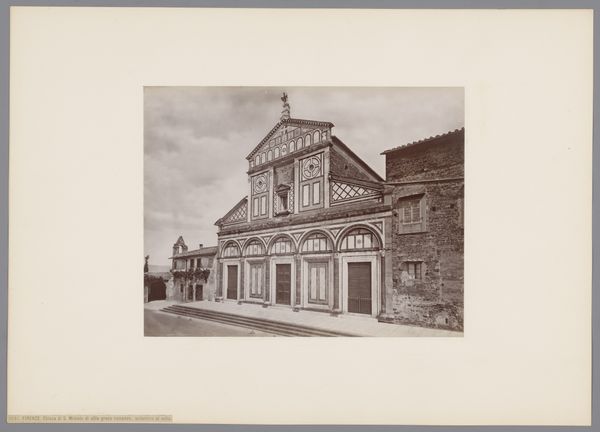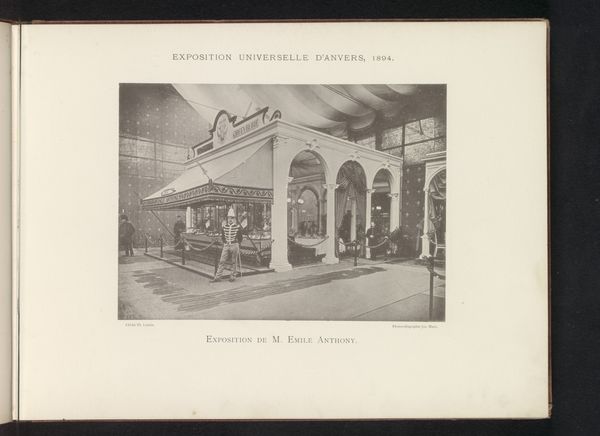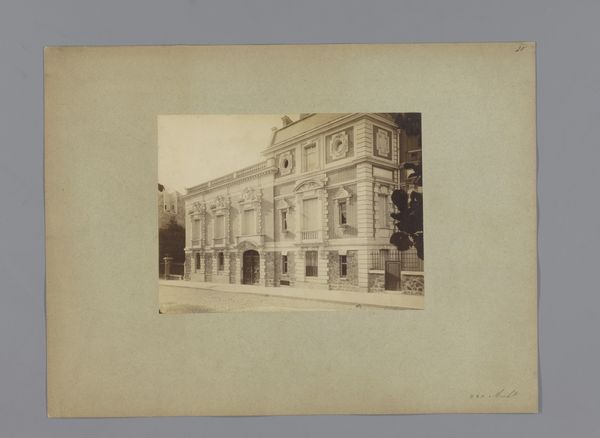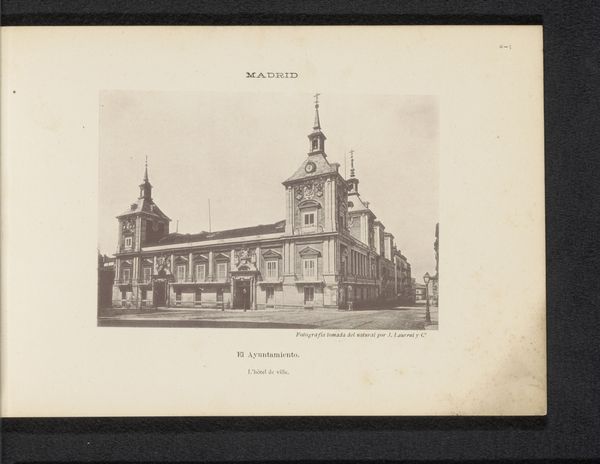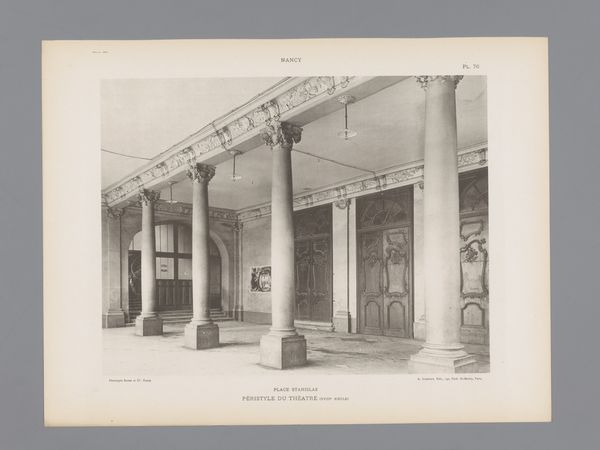
Exterieur van het paviljoen van Zuid-Afrika op de wereldtentoonstelling te Antwerpen 1894
0:00
0:00
print, photography, architecture
#
art-nouveau
# print
#
landscape
#
photography
#
coloured pencil
#
architecture
#
realism
Dimensions: height 158 mm, width 219 mm
Copyright: Rijks Museum: Open Domain
This is Th. Lantin’s photograph of the exterior of the South Africa pavilion at the World Exhibition in Antwerp. It was made using photographic processes, and the image is infused with the socio-political context of its time. What we see is a structure, likely made of timber and plaster, adorned with flags. It has a decorative facade designed to represent South Africa to the world. The pavilion is more than just a building; it’s a stage for the display of national identity. Consider the labor involved in the pavilion’s construction, from the initial design and extraction of raw materials, to its intricate fabrication and assembly on site. The building can be seen as a product of late 19th-century industrialization and globalization. It’s about trade, and also about the consolidation of colonial power, with all the implications that has for class and labor. Looking at the built structure, we can begin to ask critical questions about the relationship between aesthetics, power, and the way materials and making are always implicated in social relations.
Comments
No comments
Be the first to comment and join the conversation on the ultimate creative platform.
